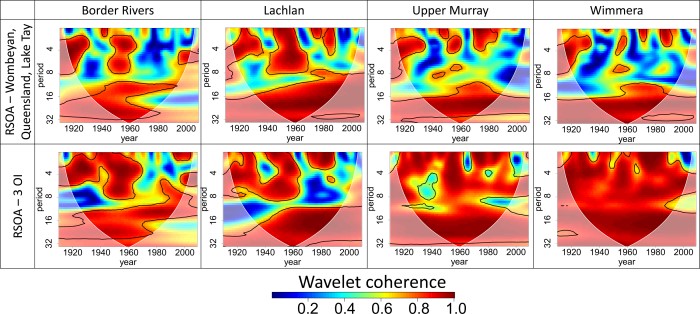A paleo-record of extremes in the Murray-Darling Basin

The assessment and planning of water resources is largely a data driven exercise that is often hampered by relatively short instrumental records that limit the ability to identify long-term, near-decadal scale variability.
Recent work by Michelle Ho and her colleagues, who undertook reconstructions of paleoclimate rainfall in the Murray-Darling Basin (MDB), showed that the probability of both dry and wet periods exceeding a decade were found to be at least 10 times more likely prior to 1883 than suggested by the instrumental records.
The need for long records of rainfall and streamflow variability is particularly critical for regions supporting the production of food, fibre, energy, and tourism such as the Murray-Darling Basin in Australia.
The research, reconstructing rainfall variability using paleoclimate records (including tree rings, corals, and cave deposits), is presented in a pair of articles jointly titled: A paleoclimate rainfall reconstruction in the Murray Darling Basin (MDB), Australia, published in Water Resources Research.
In part 1, Evaluation of different paleoclimate archives, rainfall networks, and reconstruction techniques, they explore the suitability of existing paleoclimate proxies in Australia for reconstructing annual rainfall in four sub-catchments of the Murray-Darling Basin – the Border Rivers, Lachlan, upper Murray and Wimmera catchments. They reinforce the notion that the fidelity of paleoclimate reconstructions are dependent on both the proxy records and the target variable being reconstructed.
Their second paper, Assessing hydroclimatic risk using paleoclimate records of wet and dry epochs showed that the probability of both dry and wet periods exceeding a decade were found to be at least 10 times more likely prior to 1883 than suggested by the instrumental records. Despite a systematic underestimation of extremes, due to a combination of proxy quality and model errors, some reconstructed rainfalls exceeded the instrumental range indicative of drier dry spells and wetter flood periods than what has been observed over the past century. Ho et al. warn that hydroclimatic risk assessments based on the instrumental records likely underestimate, or at least misinterpret, the frequency, duration, and magnitude of both flood and drought regimes in the Murray-Darling Basin.
‘A paleoclimate rainfall reconstruction in the Murray Darling Basin (MDB), Australia’, Water Resources Research, DOI: 10.1002/2015WR017059
